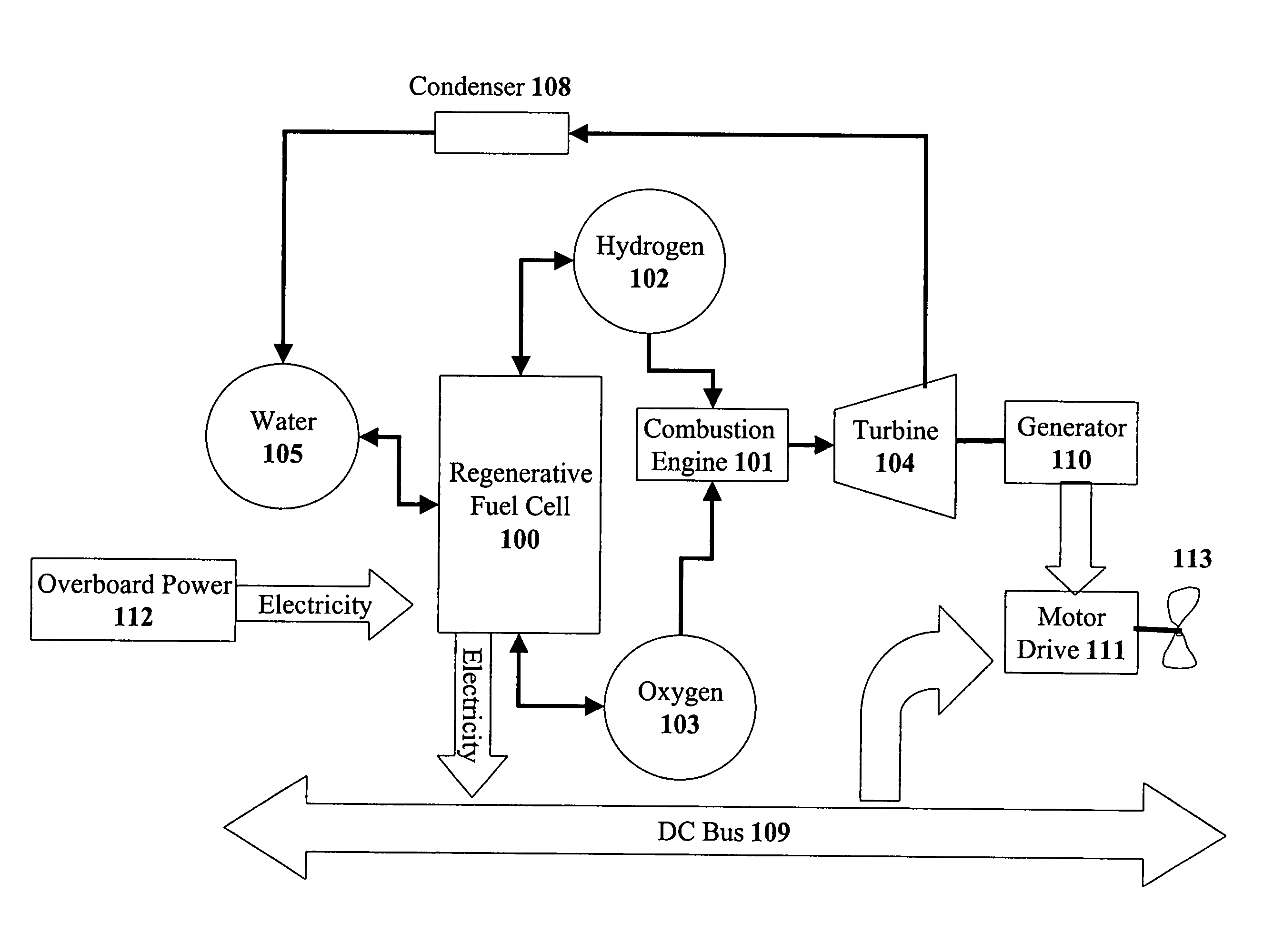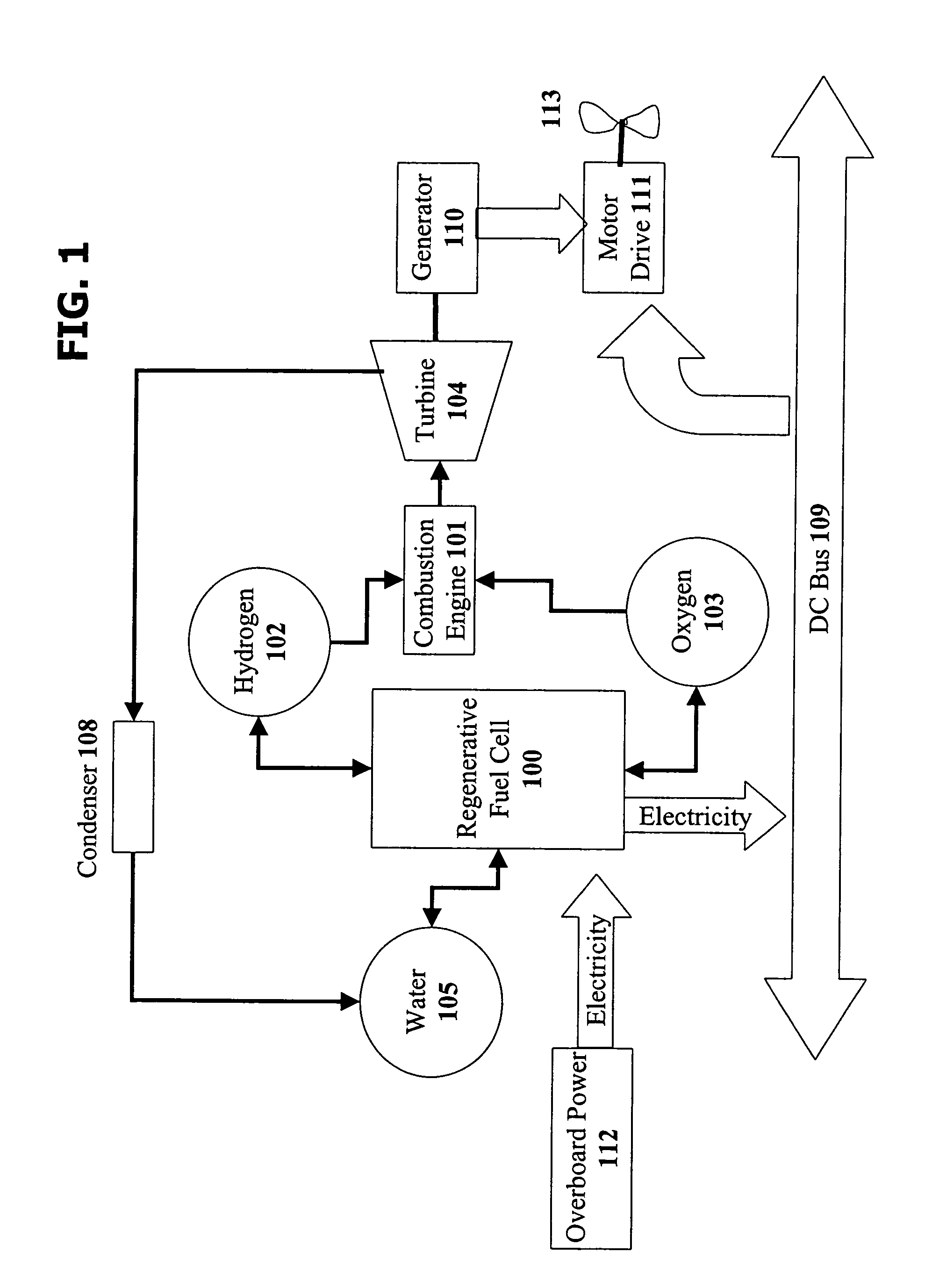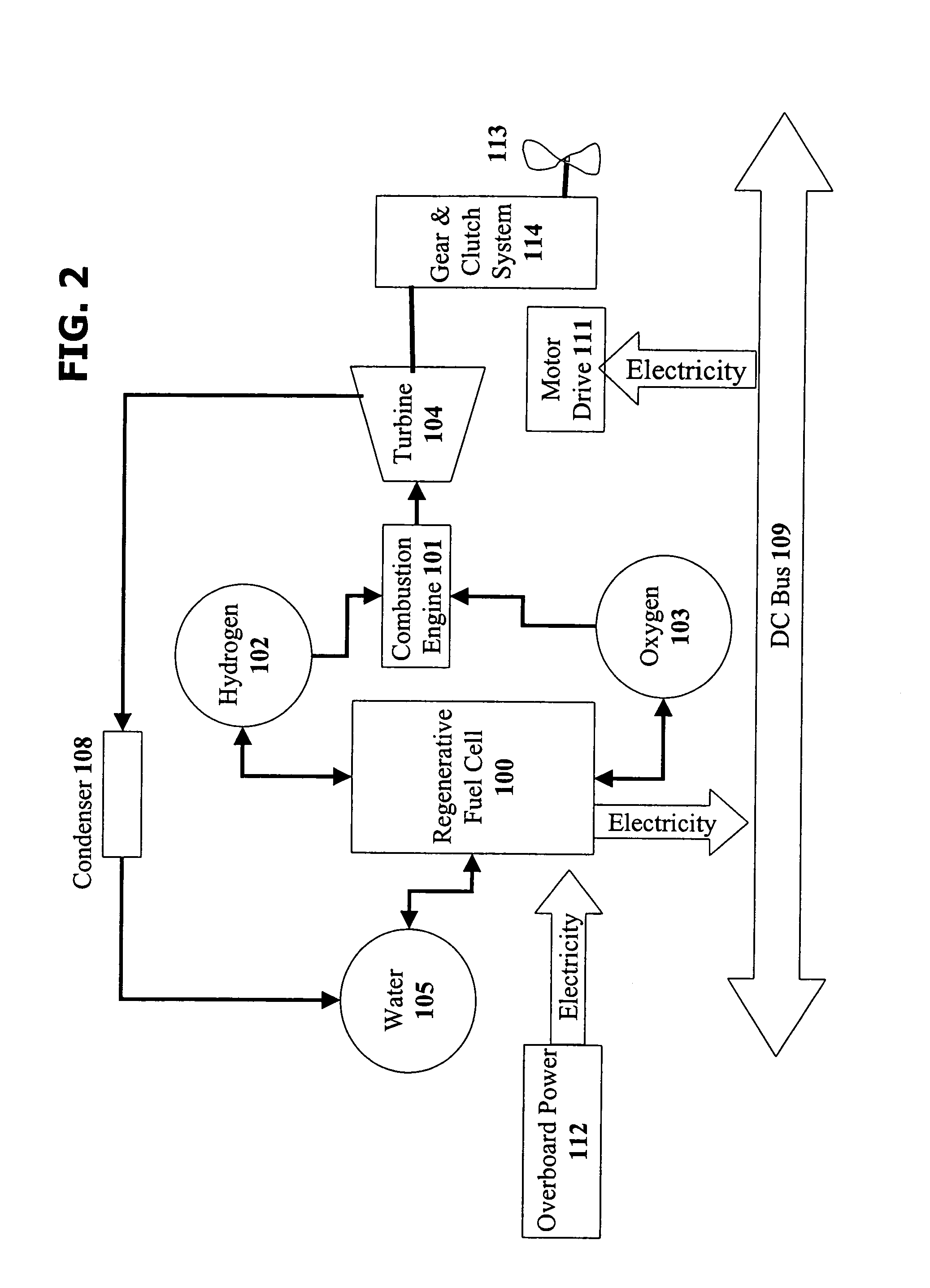Power generation system using a combustion system and a fuel cell
a technology of combustion system and fuel cell, which is applied in the direction of reciprocating combination engines, marine propulsion, vessel construction, etc., can solve the problems of limited capacity for both duration and output power, damage to the turbine, and add additional mechanical complexity, so as to achieve the effect of more maneuverability
- Summary
- Abstract
- Description
- Claims
- Application Information
AI Technical Summary
Benefits of technology
Problems solved by technology
Method used
Image
Examples
Embodiment Construction
[0019]Although this invention is applicable to numerous and various types of power generation and propulsion systems for marine vessels, it has been found particularly useful in the environment of power generation systems for small-scale underwater vessels and UUVs. Therefore, without limiting the applicability of the invention to underwater vessels, the invention will be described in such environment.
[0020]With reference to FIG. 1, there is a schematic representation of a closed loop power system for an underwater vehicle. Hydrogen is stored in a hydrogen supply 102 and oxygen is stored in an oxygen supply 103. The hydrogen supply 102 and oxygen supply 103 could be pressurized tanks containing the fuel and oxidizer, respectively, with the related control and safety elements. The hydrogen supply 102 and the oxygen supply 103 are in fluid communication with a regenerative fuel cell 100. Water is stored in a water supply 105, which is in fluid communication with the regenerative fuel ...
PUM
 Login to View More
Login to View More Abstract
Description
Claims
Application Information
 Login to View More
Login to View More - R&D
- Intellectual Property
- Life Sciences
- Materials
- Tech Scout
- Unparalleled Data Quality
- Higher Quality Content
- 60% Fewer Hallucinations
Browse by: Latest US Patents, China's latest patents, Technical Efficacy Thesaurus, Application Domain, Technology Topic, Popular Technical Reports.
© 2025 PatSnap. All rights reserved.Legal|Privacy policy|Modern Slavery Act Transparency Statement|Sitemap|About US| Contact US: help@patsnap.com



